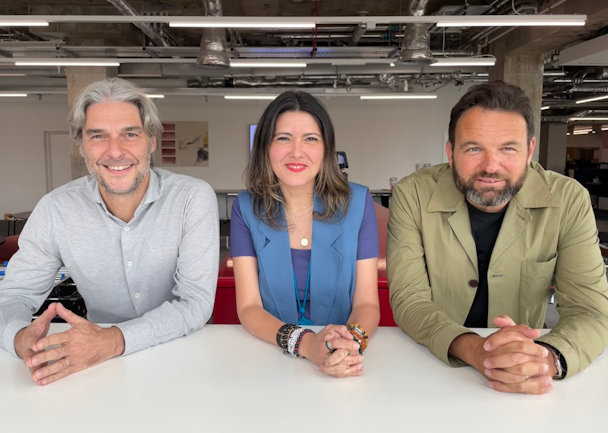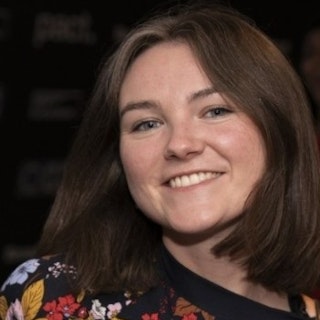Inside Dove’s formula for turning purpose into profit
In a rare joint interview, we catch up with CMO Alessandro Manfredi and vice-president Firdaous El Honsali, as well as Ogilvy global ECD Dan Fisher.

Left to right: Dove's CMO, VP and Ogilvy ECD / Ogilvy
The ethics and business case of brand purpose has been called into question in recent years, especially within Unilever. In 2022, investor Terry Smith claimed the company was “obsessed with publicly displaying sustainability credentials at the expense of focusing on the fundamentals of the business.” Its current chief exec, Hein Schumacher, recently said purpose can be an “unwelcome distraction.”
But there is a Unilever brand that breaks the mold and that is Dove. The soap maker has witnessed the hype around brand purpose go full circle, having done purpose marketing before the term was even coined. Despite cynicism creeping in, it has maintained and even strengthened its purpose strategy.
Its chief marketing officer Alessandro Manfredi tells The Drum: “Dove has proven every single year for the last 20 years that purpose is not inconsistent with profit, but actually accelerates profit. People forget that it’s not necessarily easy to create a flywheel of purpose and ensure that it actually drives the acceleration of growth of brands.”
So, how does Dove do it?
Explore frequently asked questions
Creating the purpose flywheel
According to Manfredi, brands need to do three things to make purpose profitable. Firstly, ensure purpose is relevant to the industry the business is in. For Dove, it makes skin care products, so all purpose activity is rooted in body and skin confidence.
Secondly, be part of the solution and don’t just create “nice” advertising. “We have always built this this positioning through a principle that is brand do before brand, say,” he explains. “You should first identify how you can be part of the solution before you talk about the problem.”
Advertisement
He gives the example of the ‘Self Esteem Project,’ which is a set of tools, training and workshops to help young girls with their body confidence. According to Dove, the program has educated 114 million children since its launch in 2004. Another example was when Dove held back its Covid campaign in regions where it couldn’t distribute donations to hospitals. Brands must avoid being “exploitative,” says Manfredi.
Thirdly, they need to tell people about it. “Something that many companies sometimes forget is that when you do good, it’s important people know about it. Don’t be shy to be proud of it; that will create goodwill with consumers.”
With those three things, Manfredi says brands will see the “benefit on sales and brand health.” Once a business can see the impact on the bottom line, there will be the confidence to do more purpose marketing. “It is not easy but it is possible. For me, that is the way to good capitalism and I’m very passionate about it because there are a lot of false myths about purpose.”
Advertisement
20 years of tackling body confidence
Dove kicked-off its body confidence platform in 2004 with ‘Real Beauty,’ which was born out of the insight that only 2% of women across all the markets Dove was in saw themselves as beautiful. Dove’s vice-president Firdaous El Honsali says: “The fact that we’ve been consistent across 20 years, whenever something happens in culture we are the right brand to speak.”
The key to consistency is setting clear boundaries about what topics the brand will weigh in on and, more importantly, not weigh in on. “The question we ask ourselves every year is what are the biggest threats to young girls’ confidence in this moment,” says Manfredi. That is why Dove started with diversity and representation and then moved into social media and now into AI. “We don’t want to spread ourselves too thin.”
Take the conversation around women’s empowerment. It’s a huge topic with many different facets, but if it isn’t about body confidence, Dove won’t get involved.
On a human level, El Honsali acknowledges that it’s often hard to be steadfast when there are other social issues you want to fix. “But when I see something out there, I always ask myself the question, ‘Is it me who wants to speak, or is it Dove that should speak?’”
Building client-agency trust
In recent years, Dove’s body confidence platform has evolved to include more reactive and quick turnaround campaigns. Its agency Ogilvy’s global executive creative director, Dan Fisher, had a big role to play in getting Manfredi and El Honsali to feel comfortable making these kinds of ads.
The first project to come out of the partnership between Fisher and Dove was the ‘Courage is Beautiful’ campaign, which was crafted in the early days of the Covid-19 lockdowns.
“We went from briefing to going on air in six long, intense, locked-down days and by the end of the project, the client-agency dynamic had completely changed and felt like one team. It set the tone for a way of working that we’ve been in ever since,” says Fisher.
Suggested newsletters for you
The ‘Reverse Selfie’ film kicked off Dove’s campaigning against social media harms, which now occupies most of its output. This was then followed by the ‘Turn Your Back’ campaign, released in reaction to the TikTok Bold Glamour AI filter that distorts people’s faces but looks worryingly realistic. El Honsali recounts an urgent call to Fisher, saying: “Please, this is big. We need to do something with the community, we need to actually help them push back on this.” 72 hours after that phone call, the ‘Bold Glamour’ campaign went live.
“‘Turn Your Back’ embraced the trust and the agility mode that we had created during Covid times,” says El Honsali. “Because we trust each other, everything that is complex in a creative process becomes easy and straightforward.”
Fisher adds: “The formalities that normally happen with the agency and client were thrown out of the window and we went straight back into that way of working.”
When asked about why his relationship with Dove works so effectively, Fisher simply says it is about listening. “Too often, agencies come into these things with a pre-conceived view of what they think is right for the client and what they think the client needs to do. While it’s great to have those opinions, they are nothing if you don’t listen to what your partners actually want.”
